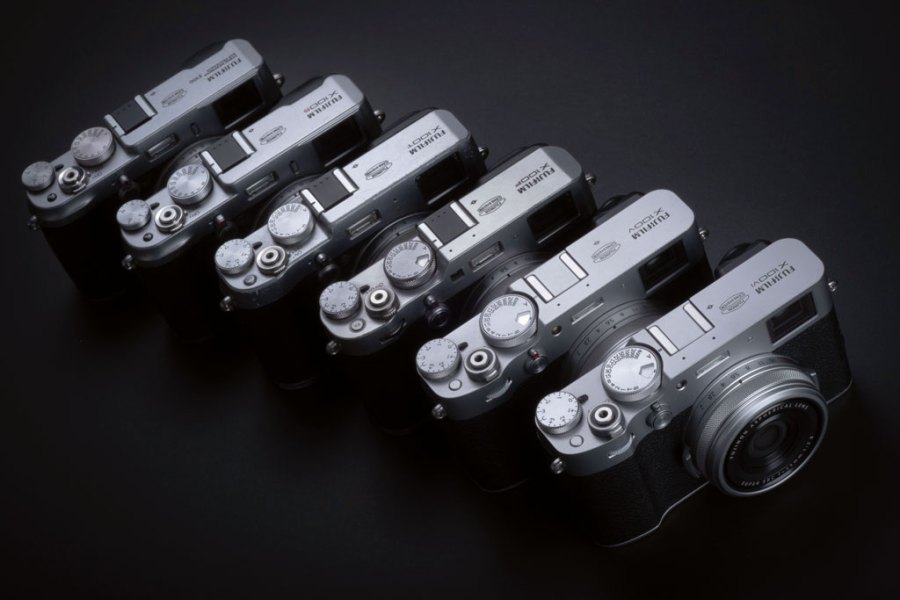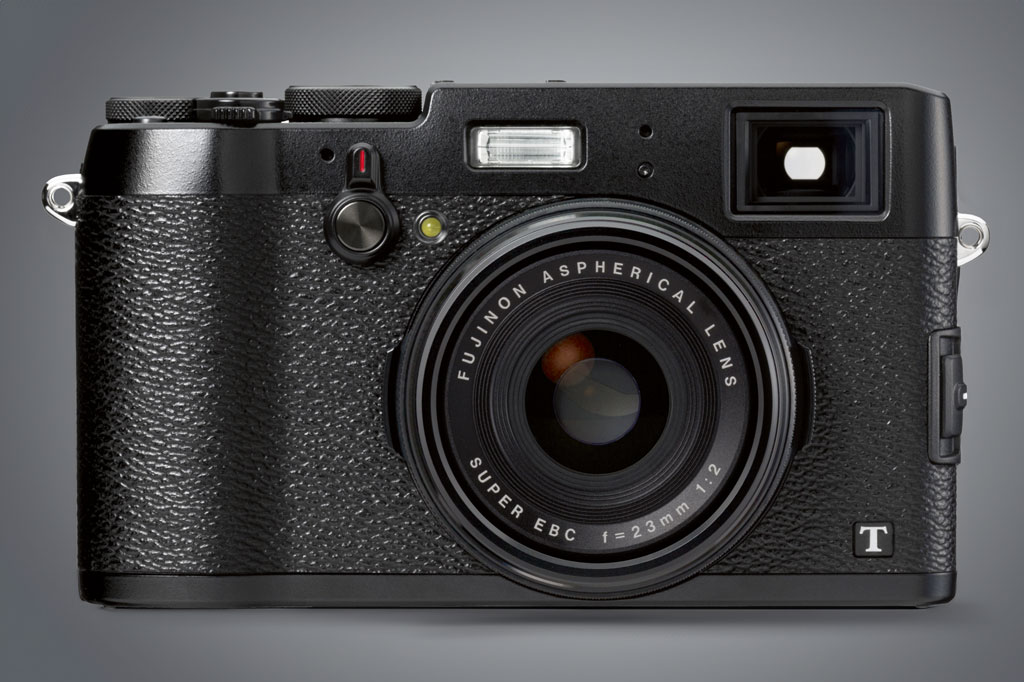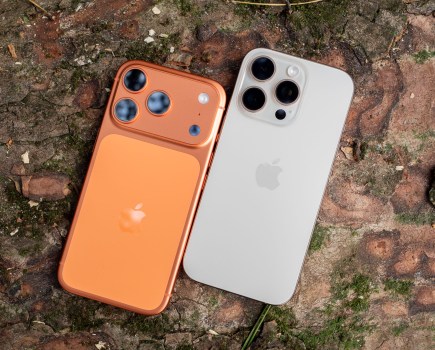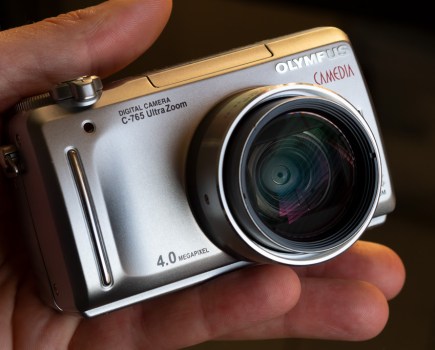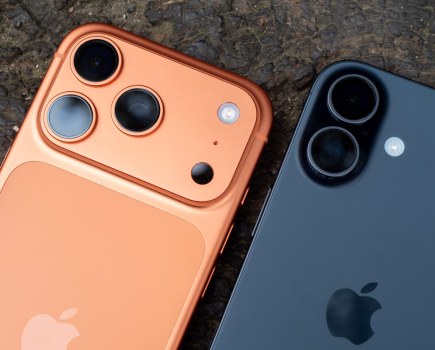Fujifilm’s X100 series of compact cameras proves there’s still a place for cameras with a fixed prime lens, Angela Nicholson explains the difference between these camera models, and helps you work out which one is best for you.
Incredibly, despite mirrorless cameras from Panasonic, Samsung and Sony, and DSLRs such as the Canon EOS 60D, Nikon D7000, Pentax K-5 and Sigma SD1 being announced at Photokina 2010, the largest photographic trade show at the time, it was this compact camera from Fujifilm that got the most attention.
Of course, the Fujifilm FinePix X100 was no run-of-the-mill compact camera with a tiny sensor and an underwhelming lens. No, it had a CMOS sensor sized to match the sensors in the most popular DSLRs of the time. And while many compact cameras of the day lacked a viewfinder, alongside its 2.8in screen the Fujifilm FinePix X100 had a hybrid viewfinder that combined an optical viewfinder with an electronic finder to give users additional choice when composing their images.
Adding to the attraction, this cutting-edge technology was housed in a body that could hide amongst popular film cameras from the 1970’s. That wasn’t just an affectation, the shutter speed dial, exposure compensation dial and aperture ring gave a level of control normally expected with a DSLR. Meanwhile the robust body has die-cast magnesium alloy top and bottom plates that make it feel reassuringly solid.
While most compact cameras feature a zoom lens, Fujifilm plumped for a fixed-focal-length optic for the X100. This enabled the company’s engineers to optimise the lens to the sensor. The combination of a 23mm lens with an APS-C format sensor delivers an effective focal length of around 35mm, a popular choice for street, documentary and environmental portraiture. Add in the maximum aperture of f/2 and the lens opens up a raft of creative opportunities.
Since the very first model came along, we’ve seen the X100S, X100T, X100F, X100V and, most recently, the X100VI, with each successive model making improvements while still staying true to the original design.
Judging by the enthusiasm with which the Fujifilm X100VI was greeted, and its record-breaking sales, our love for the X100 series has not diminished. We may all carry smartphones with clever cameras, but there’s still a strong desire to use a dedicated camera with traditional controls. Let’s take a look in more detail at each camera to consider their relative merits.
Fujifilm FinePix X100: the camera that launched the line
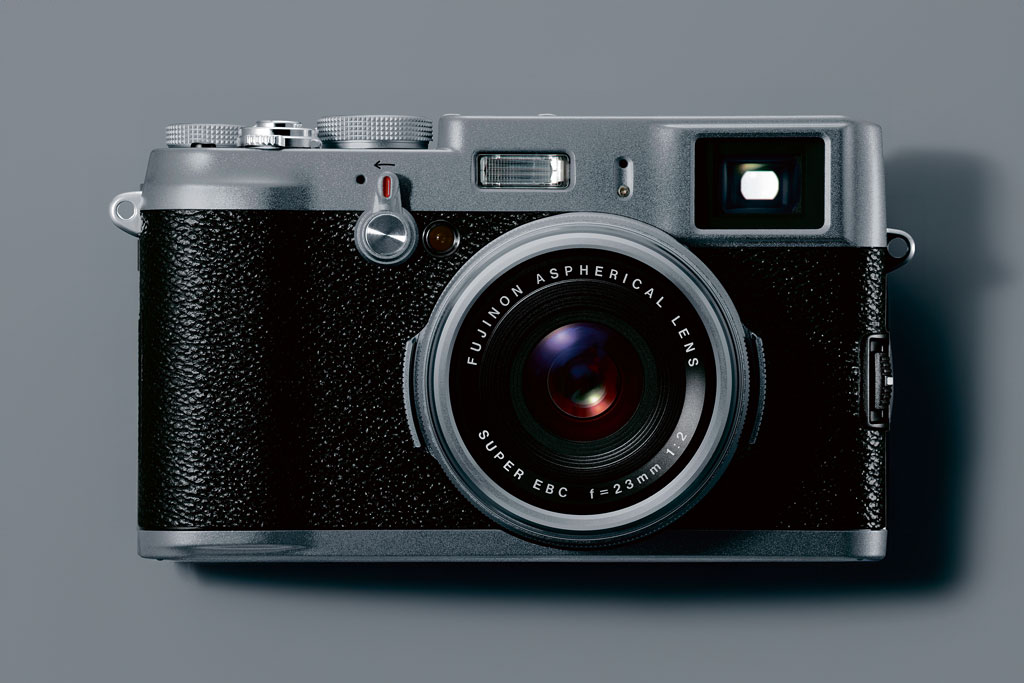
At a glance:
- Price new: £999
- Used guide price: £579
- 12.3MP APS-C format CMOS sensor
- EXR Processor
- ISO 200-6400, expandable to ISO 100 and 12,800 for JPEGs
- Fujinon 23mm f/2 lens
- 2.8in LCD with 460,000 dots
- Hybrid optical and electronic viewfinder with 1,440,000 dots
- Size: 126.5×74.4×53.9mm
- Weight: 445g with battery
- Announced September 2010
Although the Fujifilm FinePix X100’s 12.3-million-pixel APS-C-sized CMOS sensor was impressive in 2010, higher-resolution sensors are now more common. Nevertheless, the 12MP sensor produces images with 4288×2848 pixels, which means at 300ppi, it creates prints that measure around 9x14in – slightly larger than A4.
Meanwhile, the Fujinon 23mm f/2 lens is constructed from 8 elements arranged in 6 groups with one double-sided glass molded aspherical element to help maintain image quality across the frame. With the macro mode engaged, the lens can focus at just 10cm, but without it the closest focusing distance is 80cm.
As was the order of the day, the autofocus system in the X100 relies on contrast detection, which generally performs well but struggles more than a comparable DSLR set-up in low light conditions.
There’s a maximum continuous shooting rate of 5fps for up to 10 JPEGs or 8 raw files, which could prove useful for street photography when there’s some developing action. However, it’s worth keeping in mind that the camera is locked down during the
2-5sec writing time.

In 2010, electronic viewfinders were still in their infancy and were viewed with suspicion by many enthusiast and professional photographers. Consequently, the X100’s hybrid viewfinder was widely seen as a safe choice because it only takes a flick of the lever on the front of the camera to swap between an electronic viewfinder (EVF) and the direct-view optical viewfinder (OVF) with digital framing marks. In the EVF’s favour, it provides a good guide to the composition, exposure, focus and colour, but it comes at the expense of a slight lag which is noticeable with moving subjects. Meanwhile, the OVF provides a nice bright view, but the framing isn’t 100% accurate and you’re reliant on a scale when setting the exposure.
At 126.5×74.4×53.9mm, the X100 is large for a compact camera, but that’s a result of it having an APS-C format sensor. It means that you’re not going to be carrying the camera in your jeans pocket, but it may slip into a jacket or coat pocket.
There’s only a small ridge on the front of the X100 but the textured surface of its main body gives a reasonable degree of grip. However, it’s unlikely that you’ll want to hold the camera one-handed, and a strap is recommended.
The large dials on the top of the camera are made from metal and have a nice action, but they are prone to being knocked out of position as the camera is pulled from a bag or pocket. The exposure compensation dial is the most vulnerable as that’s on the top-rear corner of the camera.
Generally, the controls on the rear of the camera work well although some may find the rotating D-pad rather fiddly to use and the small central Menu/OK button is so tiny and almost flush with the body that you have to use a fingernail to press it. Another bugbear is that the AF button has to be depressed while the D-pad is used to select the AF point.
Read our review of the Fujifilm X100
Fujifilm X100S: the X-Trans CMOS sensor and phase-detection focus arrive

At a glance:
- Price new: £1,099
- Used guide price: £684
- 16.3MP APS-C format X-Trans CMOS II sensor
- EXR Processor II
- 14-bit raw files
- ISO 200-6400, expandable to ISO 100 and 25,600 for JPEGs
- Fujinon 23mm f/2 lens
- 2.8in LCD with 460,000 dots
- Hybrid optical and 0.48in electronic viewfinder with 2,350,000 dots
- Size: 126.5×74.4×53.9mm
- Weight: 445g with battery
- Announced January 2013
Externally, the X100S is almost the same as the X100 but there are some important differences on the inside. Firstly, the sensor makes a jump from 12.3-million-pixels to 16.3MP but, more significantly, there’s also a change in the chip’s design with the use of Fujifilm’s X-Trans CMOS II sensor.
This is the same sensor as is in the Fujifilm X-Pro 1, X-T1, X-T10 and X-E2, and it employs a six-by-six coloured filter array, rather than the more common two-by-two Bayer pattern. This alternative design gives greater control of moiré and false colour without the need for an anti-aliasing or optical low-pass filter which can itself reduce image quality. In addition, the X100S records 14-bit raw files instead of 12-bit, which means it can reproduce around four times as many tones as the X100.
Another benefit of the X-Trans CMOS II sensor is that it features 142,000 on-chip phase detection pixels across 40% of the image frame. Consequently, the X100S has a hybrid autofocus system that can switch automatically between phase and contrast detection. This enables the X100S to acquire focus in as little as 0.08 seconds compared to 0.22 seconds with the X100. That’s particularly noticeable when shooting street or documentary photography where the decisive moment can be fleeting.
Thanks to the use of the EXR Processor II, the X100S is generally a bit snappier than the X100, with a faster start-up time and the maximum continuous shooting rate, which jumped to 6fps, can be maintained for more than 30 images.
Although the X100S has the same 23mm f/2 lens as its predecessor, the X100, it gained Fujifilm’s Lens Modulation Optimiser (LMO). This uses hardware built into the processor to calculate and correct for lens diffraction and aberration.

Fujifilm also improved the manual focus ring’s responsiveness and added two manual focus assist modes to take the total to three. The Standard mode activates a magnified view while the new options were focus peaking and a digital split-image inspired by rangefinder focusing.
Meanwhile, the EVF in the X100S saw a jump in resolution to 2.36-million-dots, giving a clearer, smoother view in some situations. This display is also used to overlay information such as shutter speed, aperture and ISO value, and even a live histogram, on the Reverse Galilean optical viewfinder (OVF).
The EVF has the advantage of showing the image as it will be captured, but using the OVF conserves battery life allowing up to 600 images to be captured instead of 300 when using the electronic finder to rear screen.
In a useful change, the X100S has a ‘Q’ button to access a Quick Menu, where the X100 has a ‘RAW’ button that is used to turn raw file recording on and off in shooting mode and access the raw conversion controls in playback mode.
Thanks to the changes to the sensor and processing engine, along with the inclusion of the LMO, the X100S produces higher-quality images than the X100. It also captures more detail than you might expect from a 16MP sensor of its time.
Read our review of the Fujifilm X100S
Fujifilm X100T: viewfinder and main screen improvements plus more refined exposure control
At a glance:
- Price new: £999
- Used guide price: £814
- 16.3MP APS-C format X-Trans CMOS II sensor
- EXR Processor II
- ISO 200-6400, expandable to ISO 100 and 51,200 for JPEGs
- Fujinon 23mm f/2 lens
- 3in LCD with 1,040,000 dots
- Hybrid optical and 0.48in electronic viewfinder with 2,350,000 dots
- Wi-Fi connectivity
- Size: 126.5×74.4×53.9mm
- Weight: 440g with battery and memory card
- Announced September 2014
The third incarnation of the X100 series again looks very similar to its predecessor, and it uses the same 16.3MP APS-C format X-Trans CMOS II sensor and EXR Processor II.
However, the X100T makes numerous improvements on the X100S. For example, the X100T’s optical viewfinder can display an electronic view of the subject in its lower right corner, allowing focus confirmation. Helpfully, that image can be magnified and combined with focus peaking or Fujifilm’s Digital Split Image display in manual focus mode. This enables more accurate manual focusing when using the optical finder, more closely replicating the experience of using a traditional rangefinder camera.
Fujifilm also refined the viewfinder information displays and made the focus-distance indicator less intrusive, so it no longer compromises the image composition.
Also, the electronic viewfinder, which retains the same physical characteristics as its predecessor but has a boosted refresh rate, has a handy rotating information display that’s useful when you turn the camera to portrait orientation.
In addition, the X100T’s 3in 1.04-million-dot LCD is a big improvement over the previous generations’ 460,000-dot displays and has a 3:2 aspect ratio to match the sensor. There’s still no touch-control though.
In a nice upgrade from the X100S, the X100T’s aperture ring has click stops at every 1/3-stop, ending the need to use the rear control to set intermediate values. The exposure compensation dial also allows a wider range of adjustment from -3EV to +3EV instead of -2EV to +2EV, and there are three customisable Auto ISO set-ups available.

There’s also an improvement to the functionality of the D-pad on the back of the camera as this can be set to move the focus area around the frame directly. This helps make the most of the camera’s optical viewfinder, especially with the visual focus check available. However, this comes at the expense of the shortcuts that are normally available via the D-pad, but two of them are accessible via the Quick menu. If you want to be able to access the macro mode on a regular basis, you’ll likely want to assign the feature to another Fn key to avoid having to dip into the main menu.
The Quick menu is user-customisable on the X100T but macro mode isn’t one of the available options.
While the build, handling and control layout of the X100T is generally very good, the small circular buttons on the back of the camera are smaller than those on the X100 and X100S, making them fiddly to operate.
Given that the imaging hardware and processor of the X100T is the same as the X100S, it’s no surprise to learn that the image quality is largely unchanged. However, the dynamic range setting, which allows you to expand the highlight dynamic range before detail clips to white, proves useful in high-contrast conditions.
The X100T is also the first camera in the series that features Wi-Fi technology to connect the camera to a phone or tablet to enable remote control or quick image sharing.
Read our review of the Fujifilm X100T
Fujifilm X100F: a new 24MP sensor, joystick and dial join the party
At a glance:
- Price new: £1,249
- Used guide price: £1,019
- 24.3MP APS-C format X-Trans CMOS III sensor
- X Processor Pro
- ISO 200-12,800, expandable to ISO 100 and 51,200 with raw or JPEG files
- Fujinon 23mm f/2 lens
- 3in LCD with 1,040,000 dots
- Hybrid optical and 0.48in electronic viewfinder with 2,350,000 dots
- Size: 126.5×74.8×52.4mm excluding protrusions
- Weight: 469g with battery and memory card
- Announced January 2017
The big news with the Fujifilm X100F was the arrival of the 24.3MP X-Trans CMOS III sensor that’s also seen in the X-Pro 2 and X-T2, doubling the pixel count of the original X100 and making a nice resolution jump in comparison with the X100T. This sensor is joined by the X Processor Pro and together they enable a wider native sensitivity range of ISO 200 to 12,800, 1EV higher than the X100T.
Further good news is that it’s possible to shoot raw files when using the expansion settings (ISO 100, 25,600 and 51,200) rather than just JPEGs with the earlier cameras. The result is high-quality images up to around ISO 1600 where noise starts to have an impact.
The camera is also more responsive than its predecessors with a faster start-up time and nippier focusing. That said, and despite the increase in the number of AF points to up to 325, the X100F is not a great choice for tracking fast-moving subjects. The AF system does, however, perform better in low light than the systems in earlier X100 cameras, making it an attractive choice for street photography and atmospheric environmental portraits.
While the colours start to lose saturation at around ISO 6400 and the shadows begin to get a little muddy, even at ISO 12,800 they are still fine for sharing on social media. And although we’d generally avoid the expansion settings, switching to the Acros black & white Film Simulation mode reaps attractive results at ISO 25,600.

At first glance, the X100F looks similar to the X100T, but Fujifilm introduced some interesting handling changes with the updated model. The most noticeable of these changes is the introduction of a joystick on the back of the camera and a new ISO selection dial. The joystick allows quicker operation and is especially handy when setting the AF point as you only need to nudge it in the appropriate direction.
The arrival of the ISO dial split opinion somewhat as it takes a little getting used to, but it’s a neat approach that combines the shutter speed and ISO dials. In its default arrangement, the large dial on the top of the camera sets the shutter speed, as on previous incarnations. Lift the dial, however, and you’re able to adjust the sensitivity (ISO) value.
One issue with the ISO dial is that you can only see a small section of it through a window in the shutter speed dial. That window and the setting marker move when the dial is lifted and rotated, so you have to look around the shutter speed dial to see the ISO value, and sometimes that value isn’t the right way up for easy reading.
Fujifilm also gave the X100T a new clickable dial on the front just below the shutter release. Those who don’t like the ISO dial can set the front dial to adjust ISO instead. However, this comes at the expense of using the dial to adjust the exposure compensation beyond +/-3EV (to +/-5EV) when the exposure compensation dial is set to the new ‘C’ setting.
Read our Fujifilm X100F review
Fujifilm X100V: new imaging hardware, a refreshed lens, improved EVF and a tilting touchscreen
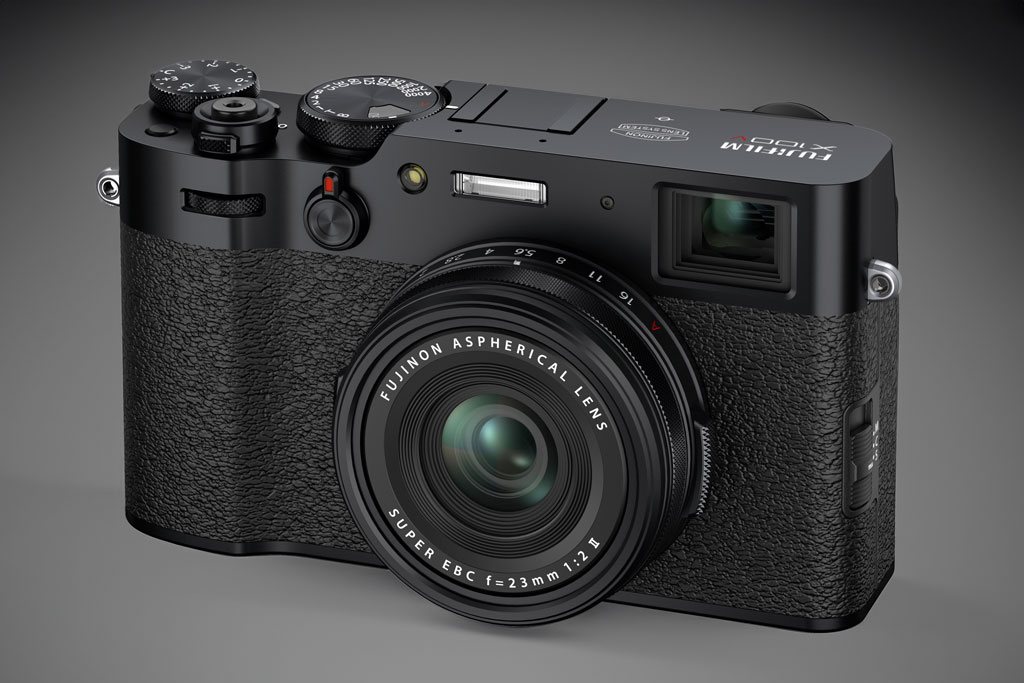
At a glance:
- Price new: £1,349
- Used guide price: £1,499
- 26.1MP APS-C format X-Trans CMOS 4 sensor
- X Processor Pro 4
- ISO 160-12,800, expandable to ISO 80 and 51,200
- Refreshed Fujinon 23mm f/2 lens
- 3in tilting touchscreen with 1.62 million dots
- Hybrid optical and 0.5in electronic viewfinder with 3.69 million dots
- Size: 128×74.8×53.3mm excluding protrusions
- Weight: 478g with battery and memory card
- Announced Feb 2020
Fujifilm introduced lots of changes for the X100V including giving it the 26.1MP APS-C format X-Trans CMOS 4 sensor and X Processor Pro 4 seen in the popular X-T4. This also brought a change to the available ISO settings with the native range starting at ISO 160 (rather than 200) and the extended options including ISO 80 (rather than 100).
The new processor also enables an increase in the maximum continuous shooting rate from 8fps with the X100F to 11fps with the mechanical shutter of 20fps with the electronic shutter in the X100V. If that’s not fast enough, there’s the option to push to 30fps with a 1.25x crop. However, it’s worth noting that you can’t shoot for long at those very fast frame rates.
All the earlier X100-series cameras use the same 23mm f/2.0 lens but the optical design was refreshed for the X100V. There are still 8 elements arranged in 6 groups, but the X100V has two aspherical elements instead of one. This improves image quality across the frame and the impact is most noticeable with subjects close to the minimum focus distance (10cm).
There’s also an improvement to the X100V’s autofocus system with up to 425 phase detection points covering 99% of the imaging area. In addition, the X100V’s Face/Eye Detection system is improved with a newer algorithm, and it can detect eyes in continuous AF mode, not just single AF mode, making it much more useful.
Another helpful introduction with the X100V is the switch to a tilting rather than a fixed screen. What’s more, for the first time in the series, the screen is touch-sensitive. That’s a useful combo when shooting above or below head height in landscape orientation.
The X100V’s Face/Eye Detection system is improved with a newer algorithm
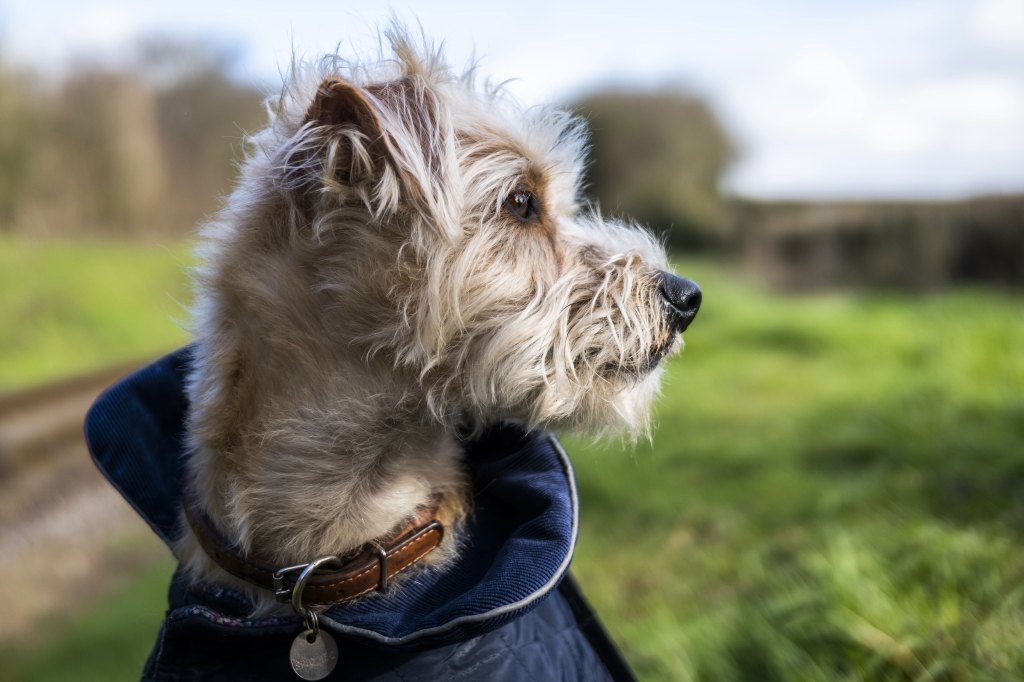
In addition, there are some nice improvements made to the X100V’s hybrid viewfinder. For instance, the reverse Galilean optical viewfinder was upgraded to the same as is in the X-Pro 3, which means its frame coverage jumps to 95% (up from 92% in the X100F) and the magnification of 0.52x (up from 0.5x). Meanwhile the X100V’s electronic viewfinder is a 0.5in type (up from 0.48in) and there’s a nice hike in resolution from 2.36 million dots to 3.69 million while the magnification rises from 0.64x to 0.66x and the refresh rate is faster at 100fps.
While the earlier X100 cameras are capable of shooting video, the X100V is the first one that has 4K video capability. It also has the F-Log profile to boost dynamic range and extend the scope for grading footage.
One the most noticeable differences between the X100V and its predecessor is it doesn’t have a D-pad and all the menu-navigation duties fall to the joystick. This gives more room for your thumb on the back of the camera. In addition, there’s a slight improvement to the ISO dial as it doesn’t need to be held up while it’s rotated.
Keen-eyed photographers may spot that the X100V is wider and deeper than the X100F, and along with its newly introduced weather-sealing, it’s around 9g heaver at 478g.
Read our full review of the Fujifilm X100V
Fujifilm X100VI: a new sensor and processor bring major changes

At a glance:
- Price new: £1,599
- 40.2MP APS-C format X-Trans CMOS 5 sensor
- X Processor Pro 5
- ISO 125-12,800, expandable to ISO 64 and 51,200
- Refreshed Fujinon 23mm f/2 lens
- 3in tilting touchscreen with 1.62 million dots
- Hybrid optical and 0.5in electronic viewfinder with 3.69 million dots
- Intelligent hybrid AF with Subject Detection
- Size: 128×74.8×55.3mm excluding protrusions
- Weight: 521g with battery and memory card
- Announced February 2024
Externally the X100VI is near identical to the X100V, but there are some major changes on the inside that have helped secure the camera’s place as the fastest-selling model in the X100 series.
First up, Fujifilm has given the X100VI the same 40.2MP sensor as the Fujifilm X-T5 and X-H2, and it’s paired with the fifth-generation X Processor Pro engine. That’s a powerful duo that brings a raft of improvements, including the introduction of subject detection autofocus and tracking that can be set to Animal, Bird, Automobile, Motorcycle & Bike, Airplane or Train. That’s in addition to face and eye detection for humans, which is accessed through a different menu setting.
Generally, the focusing is fast and accurate and the face and eye detection (and subject detection) proves extremely useful for the type of photography that the X100 series is best suited to. It allows you to concentrate on the composition while the camera takes care of tracking the subject.
Despite the increase in resolution, the X100VI has the same upper sensitivity settings as the X100V (ISO 12,800 as standard and extended settings up to ISO 51,200), and lower base settings of ISO 125 as standard, expandable down to ISO 64.
Furthermore, the X100VI is the first X100-series camera to feature in-body image stabilisation (IBIS) and it extends the safe handheld shutter speed by up to 6EV. In our review, we were able to get sharp images at shutter speeds as low as 1/4sec; and this, as well as the built-in 4-Stop ND filter and wide ISO range, extends the creative opportunities of the camera.

The X100VI is also the first in the range to offer 10-bit HEIF file recording alongside raw files as an alternative to JPEGs.
Fujifilm’s Film Simulation modes are widely respected with an increasing number of options becoming available in successive cameras. The X100VI has a total of 20 modes, gaining the new Reala Ace on top of those available with the X100V.
Although it’s primarily a stills camera, the X100VI has some advanced video capabilities with output up to 6.2K at 30p (with a 1.23x crop), plus 4K 60p (with a 1.14x crop) and 4K 30p. Also at Full HD, it’s possible to shoot at up to 240fps, up from 120fps with the X100V, widening the scope for creating
slow-motion videos of fast action. Plus, there’s F-Log and F-Log2 available for extending dynamic range.
One concern with the X100VI might be that the sensor’s resolution is too high for the lens, but the 23mm f/2 lens, which has the same design as the lens on the X100V, enables an impressive level of detail to be recorded. Fine details are crisp right into the corners of the frame.
After the handling changes made for the X100F and X100V, there’s little new to report with the X100VI. However, the newer camera is 2mm thicker and 43g heavier. In addition, the X100VI’s screen can tilt down to 45°, around 15° further than the X100V’s.
Read our Field test review of the Fujifilm X100VI
Related reading:
- Fujifilm X100V vs Fujifilm X100VI comparison – key differences explored
- WIN a Fujifilm X100VI Limited Edition camera – thanks to Fujifilm
- Fujifilm X-H2 Full Review – 40MP high resolution wonder

